What is a jockstrap for sports and what is it used for?
Other Sports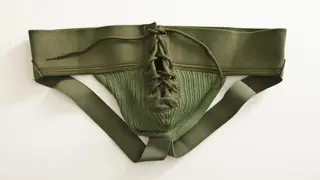
Rugby is a high-impact contact sport played worldwide. Aside from identification, players' kits are crucial in preventing or minimising injury during active play. This article provides details on all rugby equipment and its significance to players.

What do you need for rugby? Sports Brief has created a list of rugby equipment using official guides and regulations from World Rugby on permitted clothing, special additional items, and banned clothing.
Every rugby team has a standardised set of uniforms, including jerseys, shorts, and socks. According to World Rugby's general requirements guide, beginner players must acquire boots with cleats, a mouth guard, headgear, and padded equipment. This article explores rugby equipment names, specifications, and uses on the field.
The correct set of equipment allows players to maximise their performance and meet match requirements. Protective gear also keeps injury rates at a minimum for players in the sport with the most contact injuries. So, what equipment do rugby players use? Have a look at this list of approved clothing to discover what you need to play rugby.
What is a jockstrap for sports and what is it used for?
Other Sports
Equipment | Primary use |
Jersey | Team and position identification |
Shorts | Team and position identification |
Socks | Moisture and slippage control |
Boots | Stability and support |
Cleats or studs | Traction and grip |
Headgear | Head protection |
Mitts | Grip |
Shinguards | Shin protection |
Shoulder and chest padding | Protection |
Mouthguards | Dental and facial protection |

The jersey is one of the most essential pieces in a rugby kit. Players must wear undershirts similar in colour and pattern to the primary colour of the jersey's sleeve, extending halfway from the shoulder point of the player’s arm to the elbow.
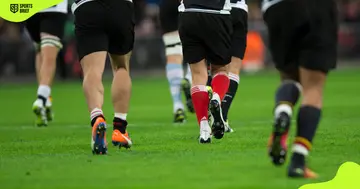
Rugby shorts are specially designed to take the strains of the game. Rug shorts are snug and less roomy than football shorts, allowing space for movement, tackling and grappling.
They are also more durable and can withstand the intense tugging in the game. For rugby players, tights, leggings, and underwear are vital in moisture control and preventing groin injury. Additional protective gear, like a jockstrap or athletic cup, aids this.
Which are the best soccer cleats for defenders, and why?
Football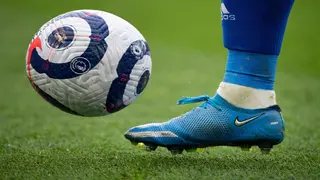

Rugby socks prevent slippage inside the boot. Manufacturers use different fabrics to make them, including polyamide and elastane. Polyamide is a breathable fabric that allows ventilation and wicks moisture, while elastane is a stretchable fabric that ensures proper fit and freedom of movement.
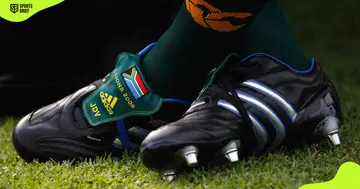
Rugby boots are unique footwear players wear during rugby matches and training sessions. According to Lovell-Rugby, the boots have a raised heel lip that provides an added advantage when applying pressure on the ground during a scrum, ruck or maul.
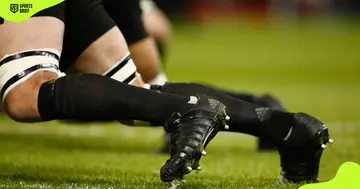
Also known as cleats or sprigs, studs are removable metal objects on the sole that define a boot's general outsole design. They provide better grip, traction, control, and speed to players on the field.
Protective gear in contact sports includes eyewear, headwear, supportive equipment or padded clothing. Here is a list of protective equipment used in rugby.
A list of the best basketball referee shoes in the market right now
NBA

The rugby headgear, known as a scrum cap, has been used since the mid-1990s. Rugger players wear this padded equipment to protect their ears in the scrum and prevent potential head injuries.

Players wear shin guards under socks. They absorb impact to minimise the risk of severe injuries and can be a game-changer during accidental kicks, collisions, or falls.
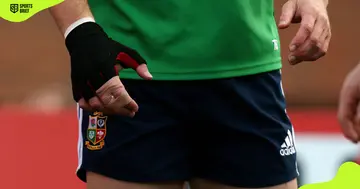
Most rugby gloves offer protection, warmth and grip. They help players to firmly grip the ball without slipping from their hands when running with it. The gloves also protect their hands from scrapes and bruises during play.

Shoulder pads protect players during tackles. World Rugby's specifications dictate that such padded clothing must be 12 mm thick and should not extend beyond the waist level, the elbow, above, or to the sides of the neck.
Top 10 best ankle braces for basketball: Find out which is the best and why
NBA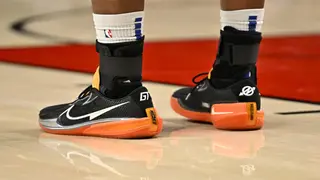

What do rugby players wear to protect their teeth? Players wear mouthguards to reduce the risk of dental injuries to their teeth and jaws. The equipment is commonly used by beginners and professional players.
Crucial training equipment a coach needs includes fitness conditioning gear, kicking trees, whistles, tackle dummies, scrum machines, training cones, poles and grids. Here is a summary of some professional training equipment or devices.

Tackle bags are training essentials players use to simulate an active tackling situation on the field. This allows the player to improve body and foot positioning, speed, balance, and strength.
Scrimmage vests, also known as scrimmage jerseys, pinnies, and bibs, are made of lightweight and breathable material that allows moisture control and improves visibility.
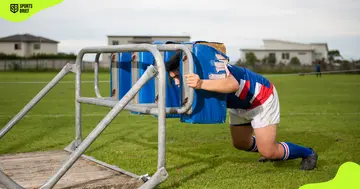
A scrum is a rugby technique used to restart play after a stoppage. According to World Rugby, the scrum packs all the forwards and scrum halves in one place on the field, allowing the offence and defence to repossess the ball. The scrum sled or scrum machine is essential for simulating such a scenario in training.
Soccer equipment list: Essentials a footballer needs to have
Football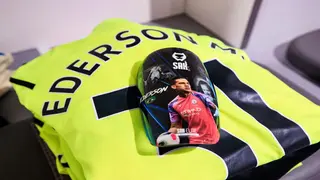
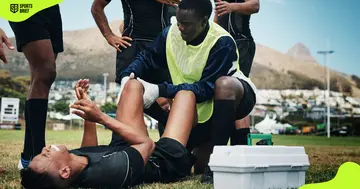
During professional and semi-professional matches, trained medical personnel or first aiders must be present. The sport's governing association also requires teams to provide equipped first aid rooms.
Athletes across all disciplines must adhere to regulations on dressing and equipment use. Here are some interesting facts about rugby equipment.
Player monitoring devices such as athlete tracking, global positioning sensors and impact monitoring devices collect live data that enables coaches to track performance and adjust training. Regulations on the devices require them to be well-secured and constructed.
The sport's laws prohibit players from wearing items such as face guards in matches as they increase the risk of injury to the wearer, other teammates or opponents. However, cases such as nose injuries may be an exception. England's rugby star Kyle Sinckler is among the players who have worn a protective mask.
Which are the best socks for tennis and why are they the best?
Tennis
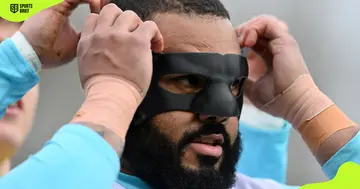
Sinckler wore a custom-made carbon fibre mask during a training session with the national team. In an interview with England Rugby, he acknowledged the equipment's importance, saying,
“I went to make a tackle but accidentally tackled Gengey’s boot instead, which split my nose in half. I basically had two noses. The team physiotherapist, Bob Stewart, found a Birmingham company that sources carbon fibre masks for Premier League footballers. The mask was measured and made within two days, allowing me to train fully that week. The mask protected my nose through training and in a Test match.”
Rugby equipment refers to clothing and devices worn by a player during active play or training sessions. Regulations on the equipment are necessary to allow freedom of movement, enhance performance and maintain safety.
READ ALSO: What is a kit in soccer? What is it, and what is the need for it?
Sports Brief published an article detailing all the requirements for a complete football kit. Guided by FIFA regulations, the report identifies each piece, its specifications and its role in aiding player performance or protection. Click the above link to check out the article and discover what you need to start your football journey.